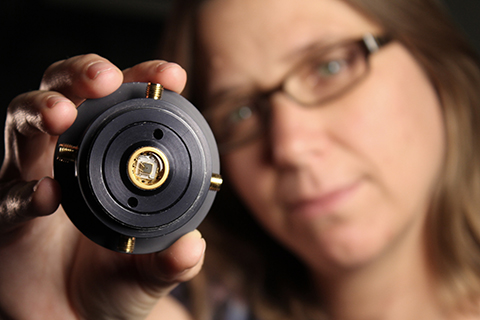For decades, astronomers have been attempting to answer one of the biggest questions in all of science: Is there intelligent life beyond Earth?
At U of T’s Dunlap Institute, Shelley Wright is leading a team that’s building an instrument to detect brief, intense pulses of infrared light that a potential alien civilization might send our way to communicate with us.
The detector she’s holding is a component of the instrument, which she expects will be deployed next year at the Lick Observatory near San Jose, California. At the same time, Wright is developing a strategy for which parts of the sky to search for a signal.
Although astronomers have experimented with instruments to detect pulses of light from space, no one has tried to do so in the infrared spectrum – because the technology didn’t exist to do so. Wright explains that pulses of infrared light are less affected by interstellar gas and dust, which means that an infrared signal can be detected at greater distances than other optical signals. She surmises that intelligent aliens would know this.
And how will Wright feel if the instrument she’s designing successfully picks up an alien signal? She demurs: “It’s hard to say how anyone would feel about such a pivotal moment for humanity.”






